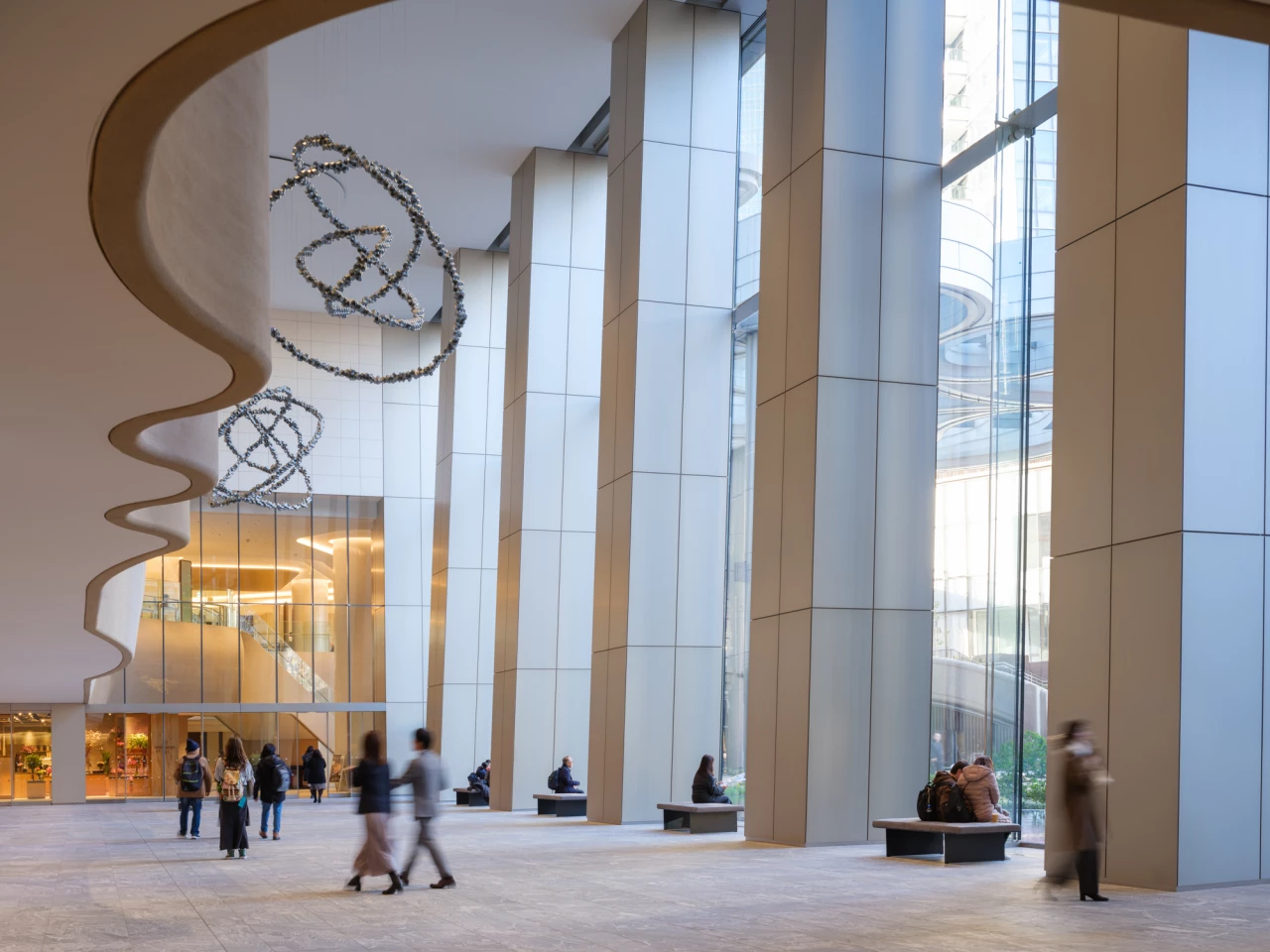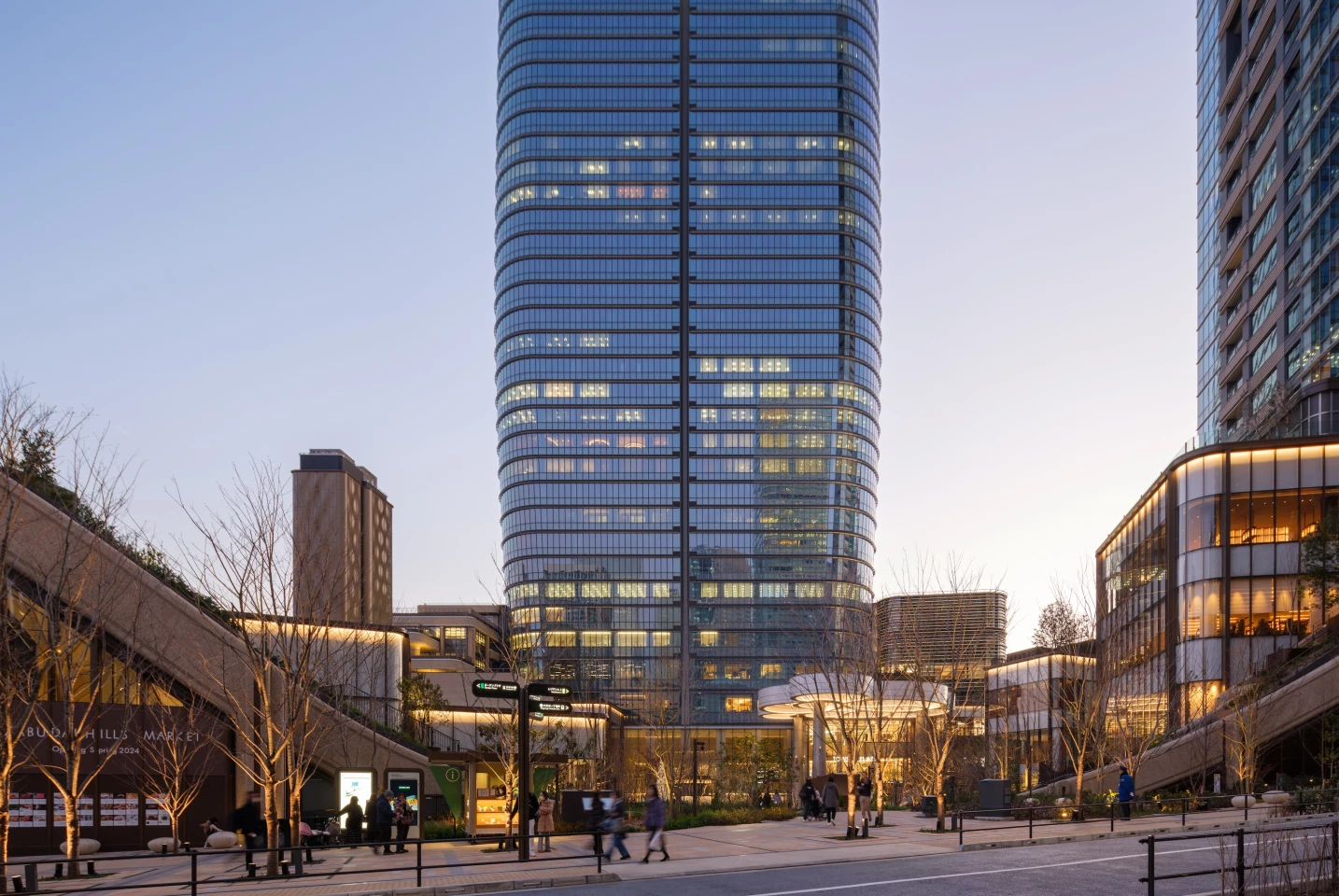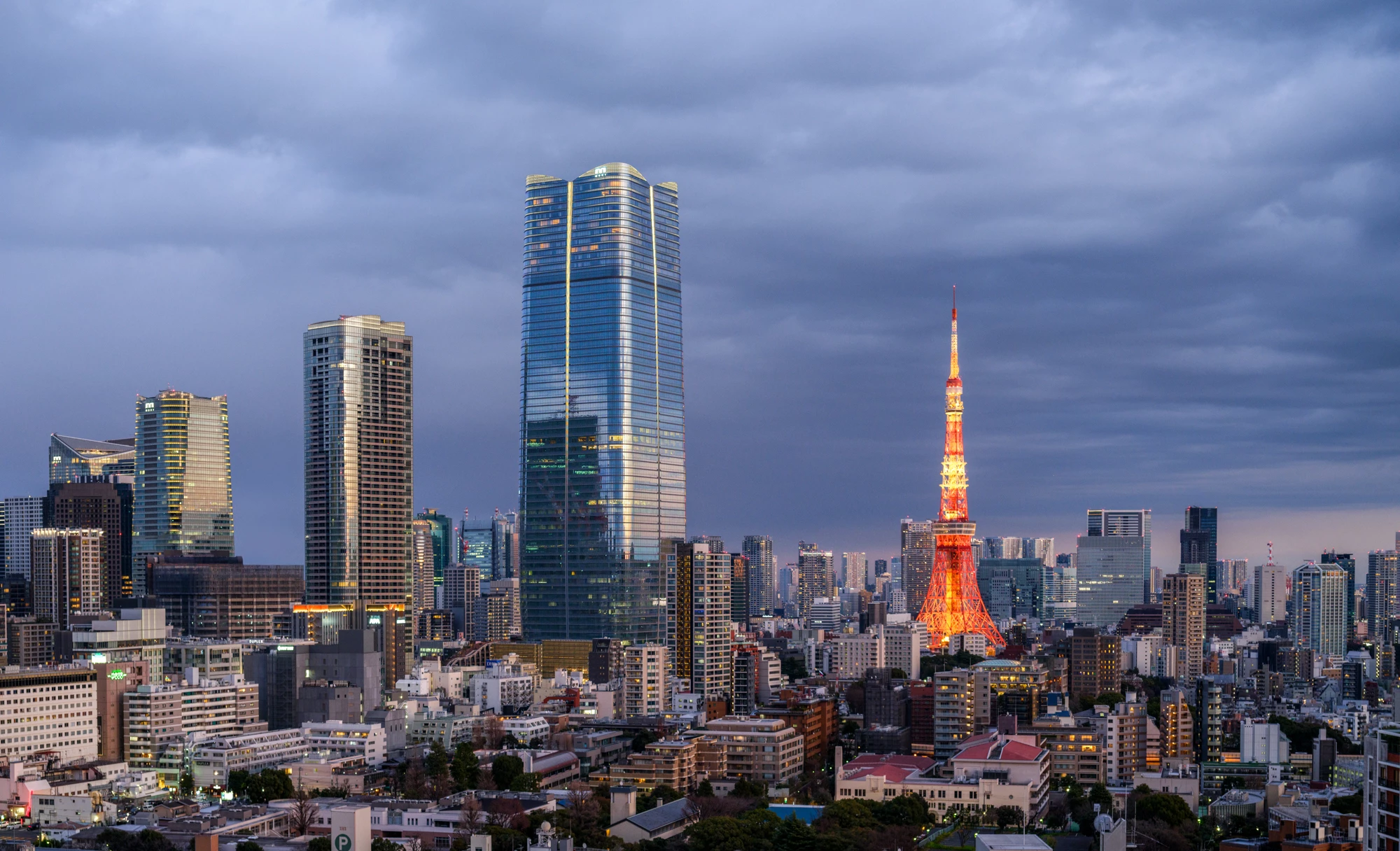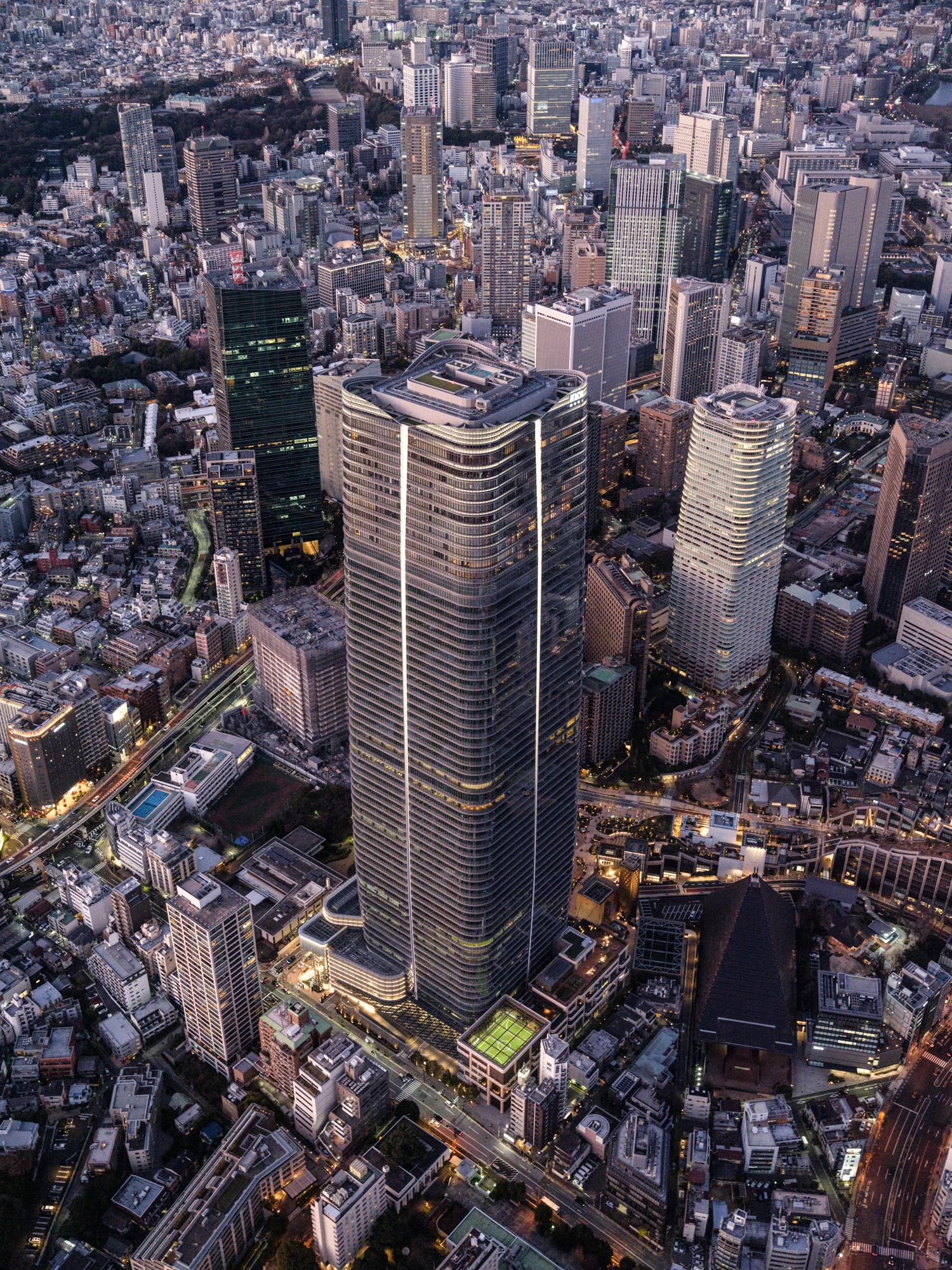Japan now boasts a new tallest skyscraper, the Mori JP Tower. Rising to a height of 325.2 m (1,066 ft) in Tokyo, the building is designed to reduce its grid-based energy usage with sustainability features and to be resilient in the face of the country's seismicity.
The Mori JP Tower was designed by Pelli Clarke & Partners and is located in the Azabudai Hills development, a burgeoning new district packed with green space which also includes buildings by Heatherwick Studio, plus two other high-rise towers.
The new skyscraper features a glazed facade and an overall form meant to evoke the shape and symmetry of a lotus flower, with a crown of four curved glass "petals." Its exterior is also illuminated with bands of integrated lighting, designed by US lighting design firm L'Observatoire International to glow pleasingly at night.
Inside, it contains 64 floors and hosts a mixture of residential space and office space, with hospitality company Aman branding the top 11 floors as luxurious Aman Residences.

It's important to note that though the Mori JP Tower is Japan's tallest skyscraper, confusingly it's not its tallest structure. That honor goes to the Tokyo Skytree, which reaches 634 m (2,080 ft), while the Tokyo Tower also edges it out at 332.9 m (1,092 ft). Both function as broadcasting and observation towers and are not included by Council on Tall Buildings and Urban Habitat in its height rankings as they do not meet the threshold of being at least 50% occupiable.
Indeed, the Mori JP Tower's height might not sound all that impressive in isolation – it's only ranked at 134th tallest worldwide – but it is when you consider the challenges of building in such a seismic area as Tokyo. According to developer Mori, it will continue functioning as normal even in an earthquake as severe as the Great East Japan Earthquake, which was a devastating magnitude 9.0 earthquake in 2011.
To ensure the skyscraper stays standing whatever comes, structural steel tubes were filled with high-strength concrete and a number of dampers installed to reduce sway. Its foundations are also substantial. Additionally, it contains an emergency shelter suitable for up to 3,600 people, as well as storage for disaster relief supplies.
"High-strength steel and concrete components are deployed to balance the structures, and vibration-control devices are placed in core areas where vibration during earthquakes can be efficiently reduced, resulting in high resistance to shaking," explains Mori. "In addition, large-scale vibration-control devices known as "active mass dampers" will help reduce the swaying that occurs at the tops of buildings during strong winds."

Azabudai Hills has received the LEED Platinum green building standard for its sustainability features. All electricity is supplied by renewable energy, heat is reclaimed from its sewage system, rainwater is stored and treated for irrigating the greenery, and wastewater from residences will be collected and used in bathrooms on office floors.
Sources: Pelli Clarke & Partners, Mori










